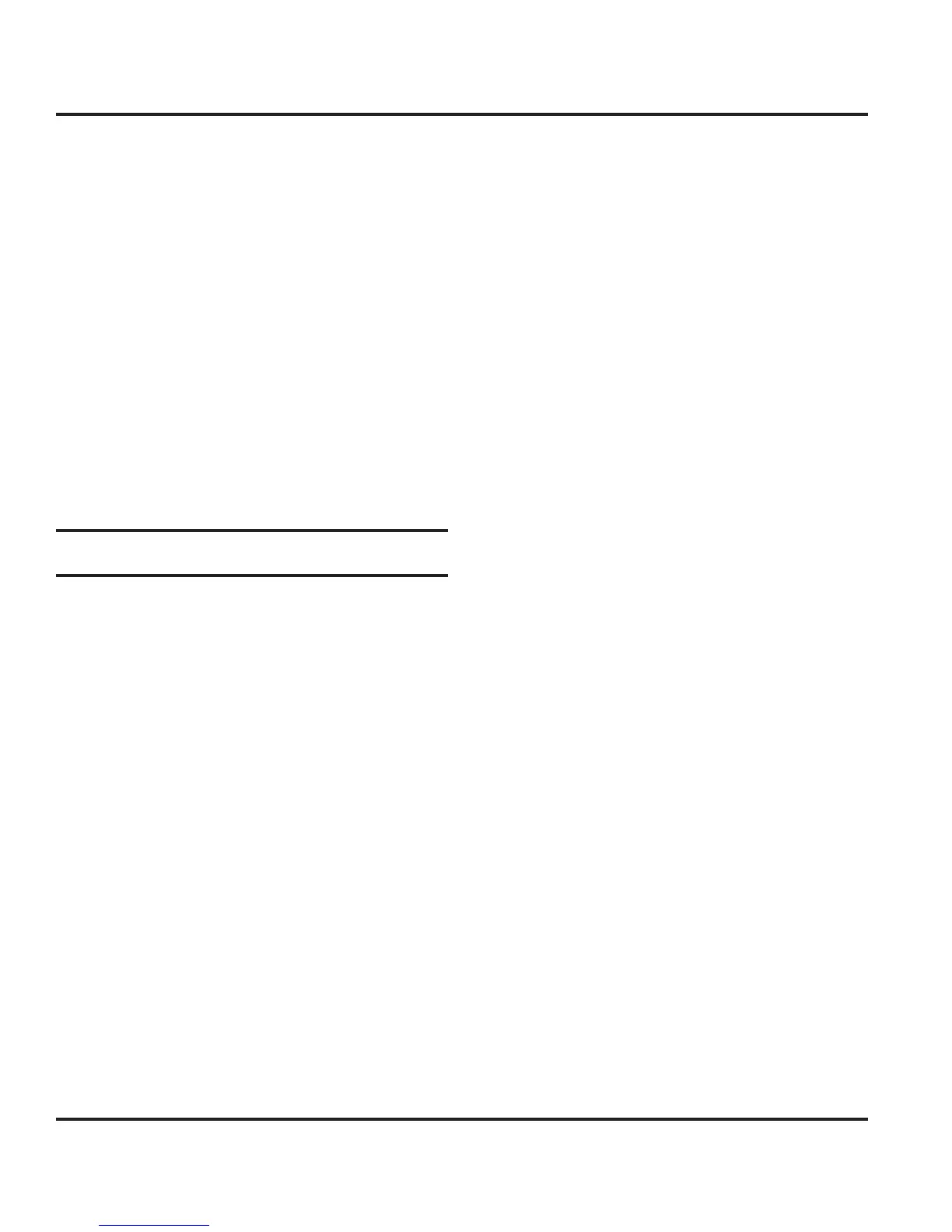Hunter e36 • Maintenance
14.8
tion.
* Realign propeller shaft
* Tighten all engine mounts.
* Complete engine maintenance as recommended by
engine manufacturer.
* Tighten all hose clamps and lubricate them.
* Check and tighten all pressurized water system fit-
tings.
* Check and service batteries, tighten battery connec-
tions, and lubricate as needed.
At the end of this chapter, you will find a maintenance
schedule. It is important that you keep the manufactur-
er’s documentation for the components and follow the
maintenance schedules and procedures listed in that
literature. This information takes precedence over what
is supplied by the boat manufacturer.
14.6 Storage and Lifting
In most cases, the reason for storage is winter layup.
The information in this section is a general guide. Your
boat dealer or a competent boatyard should prepare your
boat for winter storage. If you are removing your boat
from the water for another reason, use the information in
this section as a guideline. Following the procedures in
this section helps to extend the life of your boat and its
equipment and simplifies re-commencing in the spring.
Indoor storage is beneficial if you are storing your boat in
a climate that produces ice and snow. However, the stor-
age building should be adequately ventilated, not tightly
closed. Ventilation, both around and throughout the boat,
is very important.
If you use outdoor storage facilities, cover your boat with
a canvas cover with provisions for ventilation to keep the
boat from “sweating.” Building a frame over the boat to
support the canvas will allow the passage of air around
the boat. The frame should be a few inches wider than
the boat so the canvas will clear the rails.
Before preparing your boat for winter storage, check the
condition of the boat and its systems and equipment.
Note any repairs needed. The need for other repairs may
become apparent during winterization. Make arrange-
ments to have the repairs completed.
14.6.1 Lifting Your Boat
Following are guidelines which will help prevent damage
to your boat as it is being lifted.
* Never hoist the boat with a greater than normal accu-
mulation of water in the bilge. Fuel and water tanks
should be empty.
* Place slings where indicated by the sling tags on the
gunwale. Proper location of the aft sling is critical. Lifting
aft of the station indicated may damage the propeller
shaft. Lifting forward of the station indicated, with the
sling under the exhaust outlets, may cause cracking
which is not covered by the warranty. Blocks or pads at
the chine corners will help keep pressure to a minimum
at this point.
* Disconnect the propeller shafts at the transmissions to
prevent damage to the transmission.
* Use flat, wide slings made of belting and spreader bars
long enough to keep pressure off the gunwale. Do not
use cable slings. Pressure by the slings on the gunwale
can cause severe gelcoat crazing or more serious hull
damage.
* The spreader bar at each sling should be as long as the
distance across the widest point the sling surrounds.
* Weight should be primarily distributed along the keel.
If a marine railway or platform is used, locate and adjust
the blocking to distribute the weight over several areas at
the intersection of stringers and bulkheads. The bunks
and/or blocks should match deadrise angle and provide
adequate support and stability.
* When lifting the boat, keep the bow higher than the
stern so the exhaust lines can drain. This will keep water
from running forward through the manifold and into the
engine itself where the water can become trapped.
Note: Keep the bow higher than the stern every time the boat
is lifted. Do not lift the stern to change a propeller. Doing so
can cause water to enter the engine. Engine failure is possible
if water enters the engine cylinders. This water can cause
hydrolock and bend the piston rods. Even a small amount of
water can cause rust or other damage.
14.6.3 Draining Your Boat
Your boat has bilge pumps for draining water from the
bilges. Some compartments in the bilge may not drain
completely because of the position of the boat. Pump

